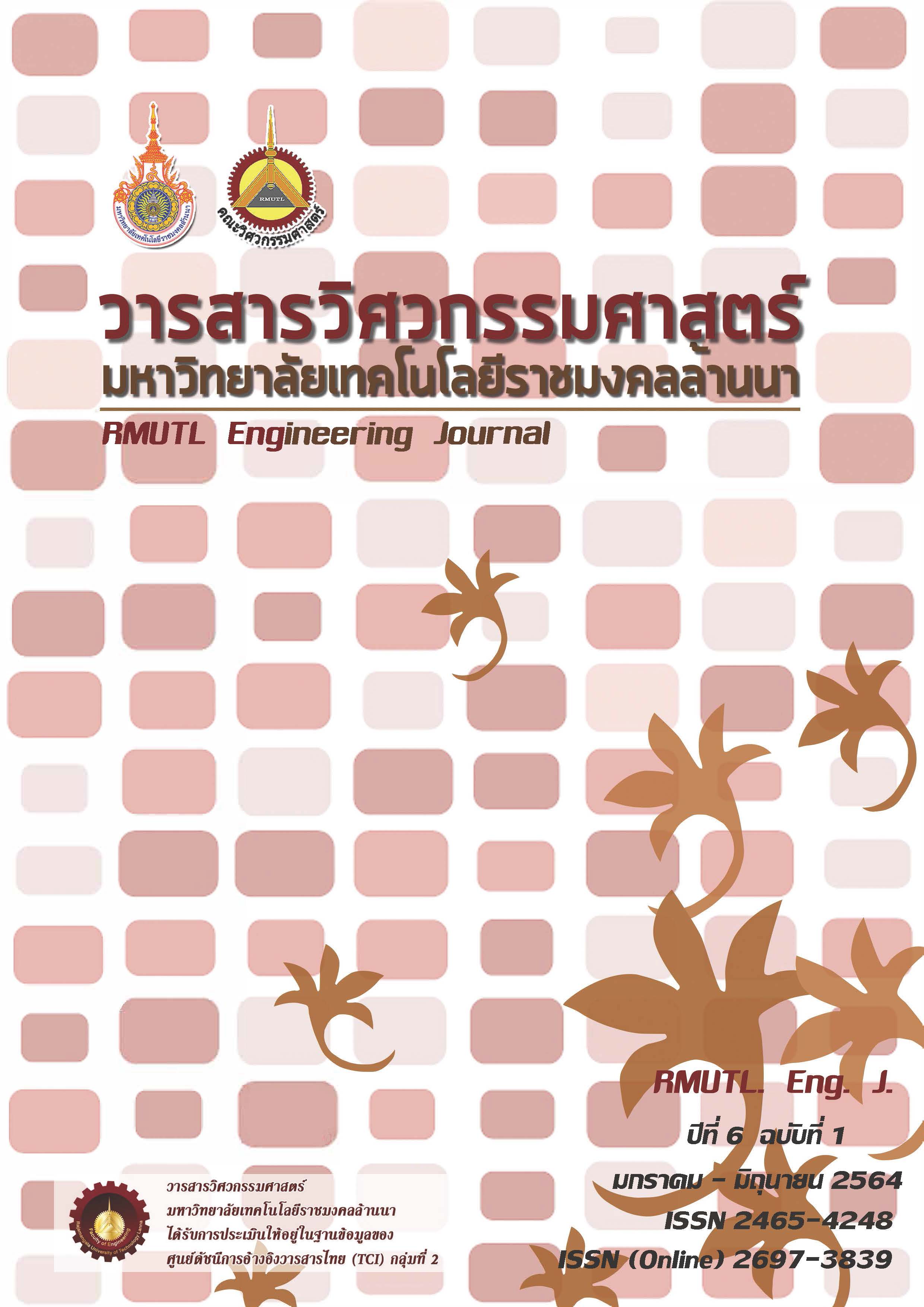The Tribological Properties of Cutting Tools and Suitable Conditions for Turning Alloy Steel for Producing Excavator Parts
DOI:
https://doi.org/10.14456/rmutlengj.2021.1Keywords:
Tribology, Cutting Tool, Turning, Alloy SteelAbstract
The objective of this study is to investigate the tribological properties of cutting tools and the suitable conditions for turning alloy steel for the manufacturing of excavator parts. The cutting tool studied is made of cemented carbide material coated with hard thin films of TiCN+Al2O3 and TiCN by CVD and PVD processes. The mechanical properties of the cutting tools with a thin film coating are investigated by nanoindenter techniques. The tribological properties between the contacting surfaces of the cutting tool material and the workpiece material are evaluated with simulation testing by Pin-on-Disk in accordance with ASTM G99-95a. In order to be effective in terms of production time, turning of the workpiece material is set to a constant cutting speed of 175 m/min during the experiment, which is the fastest value according to the manufacturer's recommendation. The studied factors in the turning process include feed rates and cutting depths. From the study, it was found that the cutting tool coated with TiCN+Al2O3 film by CVD process, which had the highest hardness in this study, gave the lowest coefficient of friction between the contacting surfaces as 0.343. It is a suitable cutting tool for turning alloy steel for producing excavator parts. The workpieces had the lowest Ra surface roughness when using a feed rate and a cutting depth of 0.10 mm/rev and 0.50 mm, respectively.
References
[2] Lin Y, He S, Lai D, Wei J, Ji O, Huang J. Wear mechanism and tool life prediction of high-strength vermicular graphite cast iron tools for high-efficiency cutting. Wear. 2020;454-455:1-11.
[3] Smith GT. Cutting Tool Technology: Industrial Handbook. London: Springer;2008.
[4] Stachowiak GW, Batchelor AW. Engineering Tribology 3rd ed. Massachusetts: Elsevier Butterworth-Heinemann;2005.
[5] Pattanatrigoon C. A comparative study the flank wear of WC coated multilayer TiCN-Al2O3-TiN inserts on the mild carbon steel (SCM420) turning process. M.Eng. thesis. King Mongkut's University of Technology Thonburi; 2006. Thai.
[6] Jareanchai P. A study of factors affecting the surface smoothness and tool lathe wear in steel turning. M.S.Tech.ED thesis. King Mongkut's University of Technology Thonburi; 2006.Thai.
[7] Khunnuy B. A study of factors affecting surface roughness for S 45 C steel turning with ceramic cutting tool coated PVD. M.S.Tech.ED thesis. King Mongkut's University of Technology Thonburi; 2007.Thai.
[8] Petkong K. A study of influence factors affecting to surface roughness in stainless steel turning. M.S.Tech.ED thesis. King Mongkut's University of Technology Thonburi; 2007.Thai.
[9] Taweeugsornpun Y. A study of influence factors of process parameter turning to high chromium white cast iron Cr 2828. M.S.Tech.ED thesis. King Mongkut's University of Technology Thonburi; 2007.Thai.
[10] Gupta KM, Ramdev K, Dharmateja S, Sivarajan S. Cutting characteristics of PVD coated cutting tools. Materials Today: Proceedings. 2018;5: 11260–11267.
[11] Kumar S, Ramanujam R, Vignesa M, Tamiloli N,Sharma N, Srivastava S, Patela A. Comparative evaluation of performances of TiAlN, AlCrN, TiAlN/AlCrN coated carbide cutting tools and uncoated carbide cutting tools on turning Inconel 825 alloy using Grey Relational Analysis. Sensors and Actuators A: Physical. 2018;279:331–342.
[12] Saoubi RM, Johansson MP, Andersson JM. Wear mechanisms of PVD-coated PCBN cutting tools. Wear. 2013;302:1219–1229.
[13] Shalaby MA, ElHakim MA, Abdelhameed MM, Krzanowski JE, Veldhuis SC, Dosbaeva GK. Wear mechanisms of several cutting tool materials in hard turning of high carbon–chromium tool steel. Tribology International. 2014;70:148–154.
[14] Nabhai F. Wear mechanisms of ultra-hard cutting tools material. Journal of Material Processing Technology. 2001;115:402-412.
[15] Hosfor WF. Iron and Steel. New York: Cambridge University Press;2012.
[16] ASTM International. G99 – 95a:2000. Standard Test Method for Wear Testing with a Pin-on-Disk Apparatus. Pennsylvania; 2000.
[17] Sresomroeng B. A study on reduction adhesion in forming of high strength steel sheet. D.Eng Thesis. King Mongkut's University of Technology Thonburi; 2009.Thai.
[18] Gåård A, Krakhmalev P, Bergström J, Hallbäck N. Galling resistance and wear mechanisms – cold work tool materials sliding against carbon steel sheets. Tribology Letters. 2007;26(1): 67 –72.










